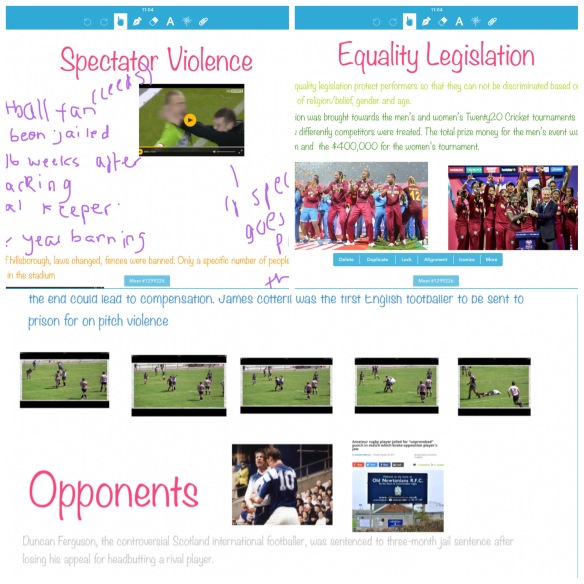Consumption rather than intellectual development?
I have been enjoying a discussion recently on Twitter about whether the use of technology in education (iPads in my case) promotes consumption rather than intellectual development.

This is a really interesting concept and one which you will no doubt have your own thoughts on. It is true, without a doubt, that there is the potential for technology to be ‘misused’ in this way, such that students are merely recipients of information and use the technology for nothing more than searching the internet, reading an electronic version of a paper handout, or watching videos online. In some instances we may even argue that this consumption is justified and has its place.
Of course, used creatively and with a little understanding of the theories behind ed tech, there is unimaginable scope for the promotion of intellectual development when using technology in education. One such example is by using collaborative tools which enable students to work together in creating a project. Such tools not only assist in developing intellectual capacity but also develop the skills required to work effectively with others – skills and attributes which employers desire in their workforce.
In a recent lesson, using Biaboard 3 as the collaborative learning tool, I set up a learning episode which challenged my students to work together in small groups on the topic of Sport and the Law. This was a new topic to them and students had limited knowledge about the issues involved. They were to research specific sub topics and create a project (or board) on Baiboard 3, (one page per group) demonstrating their new-found knowledge and understanding.
Once all students had finished, we projected the completed board onto the class whiteboard using AirPlay, enabling each group in turn to present their findings to the rest of the class. Questions were asked and further examples and clarification was provided where necessary, (by the students), which led to deeper comprehension. Finally, the Baiboard 3 project was exported as a PDF file to Showbie, which enabled all students to have access to all of the learning in that lesson and not just the individual sub topic they were working on. This, in turn, ensures that the rich learning that took place in the lesson is not ‘lost’ and enables easy access and retrieval of classwork when it comes to reviewing learning and preparation for assessments and exams.

Did the use of technology promote intellectual development?
I would argue yes, but ultimately it was the pedagogy – the requirements of the activity and the way in which it was set up and structured which really allowed for the promotion of intellectual development. This should always be the driver and at the forefront of our teaching, rather than putting the technology first and trying to fit a topic around it.
That said, this activity could not have been carried out with the same degree of success and engagement without the use of technology. Firstly, the technology allowed students’ curiosity to be piqued; they had the choice to go anywhere on the internet and find out more about the sub topic they were working on. They were able to delve deeper into stories about player and spectator violence and the consequences of such actions. They were able to discover the meaning of negligence and its place in sport and the law and they were able to familiarise themselves with the complexities of employment and commercial contracts.
In working together to create their presentations, students then had to decide and agree upon which pieces of information to use and which to discard, which pieces of information were relevant and which were not, which pieces of media to use in order to best convey their intended message. They had to discuss with their partners about how to present their information on the Baiboard page and who from within their group was going to present to the rest of the class. They spent time rehearsing and modifying their presentations.
All this great interaction (intellectual development) was taking place among the students and Baiboard 3 was the tool that pulled it all together. This simply would not have been possible if each group had just been working with some colour pens, an A3 piece of paper and a text book.
Alternatively, I could have stood at the front of the class in my didactic mode and my students could have ‘consumed’ a PowerPoint presentation on the subject! How’s that for promoting intellectual development?

Pingback: The PE Playbook – May 2017 Edition – drowningintheshallow